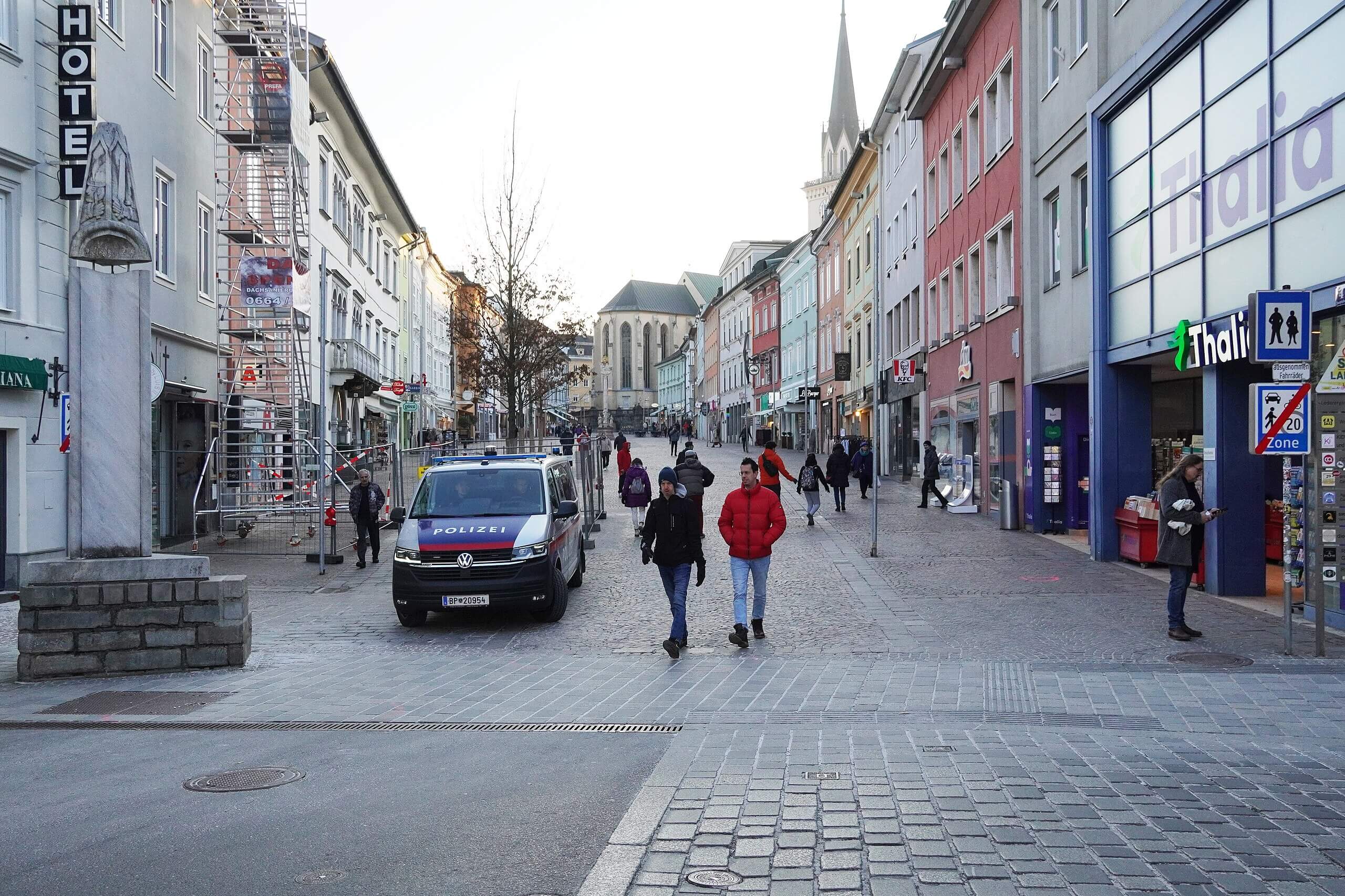The Problem Is Terrorism, Not Migration
The nexus between terrorism and migration is more complex than often portrayed in public discourse.

Published by The Lawfare Institute
in Cooperation With

In February, Europe witnessed a string of terrorist acts, committed by both legal and illegal immigrants. These included a car-ramming attack in Munich by a 24-year-old Afghan resident; a knife attack in Villach, Austria, by a 23-year-old Syrian refugee; and a stabbing attack in Mulhouse, France, by an Algerian irregular immigrant under an expulsion order. These incidents, particularly as they occurred over a short time span, raise legitimate questions about the security risks related to immigration.
Politicians quickly reacted to these events to draw direct links between immigration and terrorism, and to call for more restrictive immigration policies. After the Munich attack, for example, the leader of Germany’s far-right party AfD posted on X (formerly Twitter): “Is this supposed to go on forever? Migration turnaround now!”
More broadly, public opinion polls suggest that European and American citizens are increasingly concerned about immigration and its consequences for security—with over half of Europeans considering the fight against irregular migration a priority and half of surveyed Americans perceiving large numbers of immigrants and refugees as a “critical threat” to their country.
Are these fears justified? What does the data say? And how much is actually known about the connection between migration and terrorism?
These issues do in fact intersect, but in more complex and less pervasive ways than often conveyed in simplistic discourses. While there are many dimensions to explore under the migration-terrorism nexus (as we have done in a forthcoming report for the International Centre for Counter-Terrorism), here we focus specifically on first-generation immigrants—both legal and illegal—in Europe.
The Migration Factor in the Terrorist Threat
Reports and figures from counterterrorism services in Europe confirm to some extent that there is an objective threat related to immigration. In France, figures from the Ministry of the Interior in 2023 show that of the 20,120 individuals listed in the National Database for the Prevention of Radicalization Leading to Terrorism (FSPRT), 4,263 (21 percent) are of foreign nationality. In Germany, 138 out of 480 individuals (29 percent) assessed by security services as dangerous Islamist extremists had no German passport.
As a point of comparison, there are 5.6 million foreigners in France out of a population of 68.6 million, representing 8.2 percent of the total population. In Germany, there are an estimated 14 million foreigners out of a total population of 84.4 million, representing 16.6 percent of the population.
Among suspect foreigners, however, illegal immigrants represent a small minority. Only 1,411 (7 percent) of the individuals monitored in France in 2023 were in an irregular situation, and only 489 of them (2.4 percent) were still in France. Similarly, in Belgium, only 77 individuals (11 percent) among the 700 listed by the Coordination Unit for Threat Analysis (CUTA) in 2023 were in an irregular situation, of which only 40 (5.7 percent) remained in Belgian territory—numbers that have since decreased further.
European counterterrorism officials we spoke to in the context of our research confirmed that some asylum-seekers are vulnerable to radicalization and that irregular immigrants living clandestinely raise specific challenges in terms of detection and monitoring. Some immigrants-turned-terrorists—such as Anis Amri (the perpetrator of the 2016 attack in Berlin) or Abdesalem Lassoued (the perpetrator of the 2023 attack in Brussels)—allegedly lived for several years in Europe before their attacks. Counterterrorism services are also concerned about terrorists infiltrating refugee flows to enter Europe undetected, notably via Central Asia and Ukraine.
In short, European security services consider immigration—whether legal or illegal—to be a potential risk factor for terrorism. However, most counterterrorism practitioners and researchers agree that terrorism is primarily a homegrown problem. The figures above underscore that the vast majority of the individuals monitored by the security services in France, Germany, or Belgium are national citizens. In France, a country significantly impacted by Islamist terrorism for many years, different research has confirmed that the vast majority of jihadi terrorist offenders were French (or European) nationals—most of them with a single nationality.
In our own research, we compiled a dataset of jihadi attacks carried out across the EU between 2014 and 2024 by immigrants—including immigrants who had acquired EU citizenship, regular immigrants with a resident permit, refugees, asylum-seekers, and illegal immigrants. We identified 47 immigrant perpetrators responsible for 43 completed attacks. This suggests, as stated above, that there is a real threat that must be addressed. However, some nuance is in order.
An analysis of the perpetrators’ legal status reveals that the majority (60 percent) held a residence permit, refugee status, or a tolerated stay permit at the time of the attack. Irregular migrants accounted for less than a third (13 individuals). Strikingly, more than half of the identified perpetrators (51 percent) had lived in Europe for at least five years before committing an attack, with an average stay of eight years. This would suggest that their radicalization occurred after their arrival in Europe, challenging the assumption that terrorism is an external threat imported through immigration. Instead, the problem seems to be less about immigration and more about integration and radicalization prevention in Europe. Moreover, these numbers remain infinitesimally small compared to the nearly 8.5 million first-time asylum applications filed in EU countries between 2014 and 2024.
Overall, our data shows that after peaking in 2016 and 2017—when the Islamic State was still benefiting from its widespread appeal—the frequency of attacks by immigrants in Europe, the number of individuals involved, and associated casualties have all significantly decreased and remained stable since then, suggesting that the link between migration and terrorism has not strengthened over time.
Victims of Terrorism
Research suggests that migrants are far more likely to be victims rather than perpetrators of political violence. Terrorism in their home countries can drive their decision to seek refuge abroad, but it may also continue to confront them once in their host countries.
A significant number of asylum-seekers and refugees in Europe have likely already been affected by terrorism in their home countries. Groups like ISIS, Boko Haram, or al-Shabaab have displaced millions through campaigns of mass violence. In some cases, displacement is not merely incidental but, rather, a deliberate strategy aimed at enforcing ideological control, extracting financial resources, or destabilizing governments.
Yet often the risks migrants face do not cease once they arrive and settle in host countries. A study of refugee-related violence between 1996 and 2015 found that “a larger number of host states experienced terrorist attacks against refugees than attacks by refugees.” Europe has not been immune to this trend. Data from 1970 to 2020 on attacks against refugees, internally displaced persons, and asylum-seekers globally show particularly high incidences in Germany and Sweden.
Numerous incidents targeting refugee reception and housing centers have indeed been reported across Europe in recent years. These have ranged from hate speech and harassment to physical assaults and arson attacks. While not all incidents meet the threshold of terrorism, some do, as when a 66-year-old man threw gasoline bombs against a Border Force center for processing migrants in Dover, U.K., on Oct. 30, 2022, injuring two persons. In Germany, eight members of the Freital Group were convicted in 2018 for founding a terrorist organization and conducting attacks on refugee shelters and political opponents. In May, German police dismantled a terror cell suspected of conducting and planning various attacks against centers for asylum-seekers and “political enemies.”
Other research suggests that xenophobia might be a better predictor of domestic terrorism than immigration numbers. Indeed, the more negative attitudes host-country populations have toward foreigners, the greater the likelihood of domestic terrorism in the presence of refugee inflows.
Xenophobic violence is not limited to refugees themselves. Human rights activists and politicians who support their integration have also been targeted. In 2016, British Labour Member of Parliament Jo Cox, a vocal defender of immigration and the Remain campaign, was killed by a far-right activist. Shouting “Britain first!” during the attack, the perpetrator reportedly regarded the victim “as one of the ‘collaborators,’ the white people who had betrayed their race.” In Germany, regional politician of the Christian Democratic Union Walter Lübcke was killed in 2019 for his pro-immigration stance.
Embracing Nuance and Complexity
Connections between migration and terrorism do exist. Recent attacks in Europe, as well as arrests of Islamic State Khorasan Province (ISKP) members that allegedly entered Europe posing as refugees, demonstrate the immediacy of the problem.
As we have argued, however, connections between terrorism and migration are multidimensional and multidirectional. Migration can be a cause but is most often a consequence of terrorism. Migrants can be terrorist perpetrators, but they are more likely to be victims of terrorism. Furthermore, our data indicates that in many cases, attacks involving immigrants in Europe occurred several years after their arrival, suggesting that radicalization occurred in Europe and, therefore, that the terrorist threat might be more a domestic problem than an external one.
For all the reasons discussed above, closer attention to the migration-terrorism nexus is needed. However, discussions are often characterized by an exaggeration of the threat, underpinned by populist discourses. On the other side of the spectrum, many consider the issue to be too sensitive to explore. As a result, there is a lack of data and nuanced analysis to support evidence-based policy in this area. This is potentially a fatal mistake. Policymakers need better guidance on how to effectively address the terrorist threat related to migration, while recognizing that the vast majority of migrants deserve to be protected and treated with dignity in line with international obligations. The problem is terrorism, not immigration.




_-_flickr_-_the_central_intelligence_agency_(2).jpeg?sfvrsn=c1fa09a8_7)

